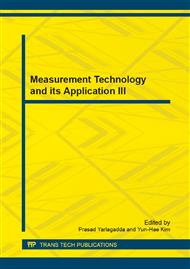[1]
L. Tay D.H. Pashley. Shear bond strength to dentin: effects of surface treatments, depth and position. Dent Mater. 4 (1988) 371-378.
DOI: 10.1016/s0109-5641(88)80052-6
Google Scholar
[2]
L.G. Watanable ,A.M. Lacy, D.R. Davis . Shear bond strength: Simple plane vs. conventional lap shear. J dent Res 67 (1987) 383.
Google Scholar
[3]
C. Prati, D.H. Pashley Dentin wetness, permeability thickness and bond strength of adhesive systems. Am J Dent 5 (1992)33-38.
Google Scholar
[4]
J.D. Eich, S.J. Robinson, R.P. Chappell, C.M. Cobb, P. Spenser The dentin surface – Its influence on adhesion, Part III. Quintessence Int 24 (1993) 571-582.
Google Scholar
[5]
R. Von Noort, G.E. Cardew, I.C. Howard et al. The effect of local interfacial geometry on the measurement on the tensile bond strength to dentin. J Dent Res 70 (1991) 889-93.
DOI: 10.1177/00220345910700050501
Google Scholar
[6]
R. Von Noort ,S. Noroozi ,I.C. Howard et al. A critique of bond strength measurements. J Dent 17 (1989) 61-7.
Google Scholar
[7]
A.A. Griffith The phenomena of rupture and flow in solids. Phil Trans roy Soc London A221 (1920) 168-198.
Google Scholar
[8]
T. Eliades, W.A. Brantley The inappropriateness of conventional orthodontic bond strength assessment protocols. Eur J Orthod. 22 (2000)13-23.
DOI: 10.1093/ejo/22.1.13
Google Scholar
[9]
L.J. Oesterle, W.C. Shellhart G.K. Belanger The use of bovine enamel in bonding studies. Am J Orthod Dentofacial Orthop. 114 (1998) 514-9.
DOI: 10.1016/s0889-5406(98)70171-4
Google Scholar
[10]
G. Guan,T. Takano-Yamamoto,M. Miyamoto,T. Hattori, K. Ishikawa,K. Suzuki. Shear bond strengths of orthodontic plastic brackets. Am J Orthod Dentofacial Orthop. 117 (2000) 438-43.
DOI: 10.1016/s0889-5406(00)70163-6
Google Scholar
[11]
N.A. Fox, J.F. McCabe, J.G. Buckley. A critique of bond strength testing in orthodontics. Br J Orthod. 21 (1994) 33-43.
DOI: 10.1179/bjo.21.1.33
Google Scholar
[12]
A. Versluis, D. Tantbirojn W.H. Douglas. Why do shear bond tests pull out dentin? J Dent Res. 76(1997) 1298-307.
DOI: 10.1177/00220345970760061001
Google Scholar
[13]
LR5KPlus 5kNUniversal Materials Testing Machine from Lloyd Instruments Manufacturer Specification Sheet, September 2009, SS-MT-6251-0909.
Google Scholar


